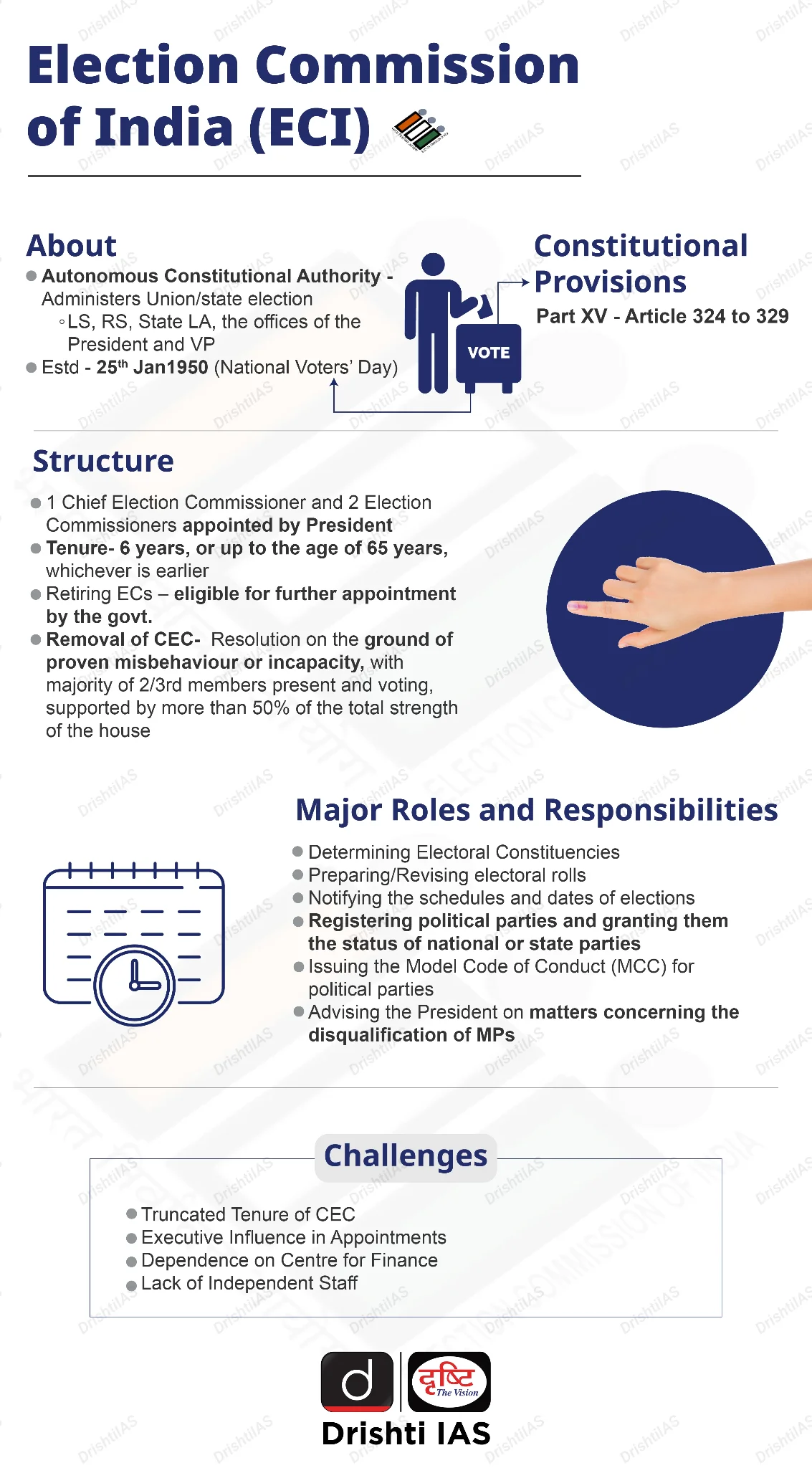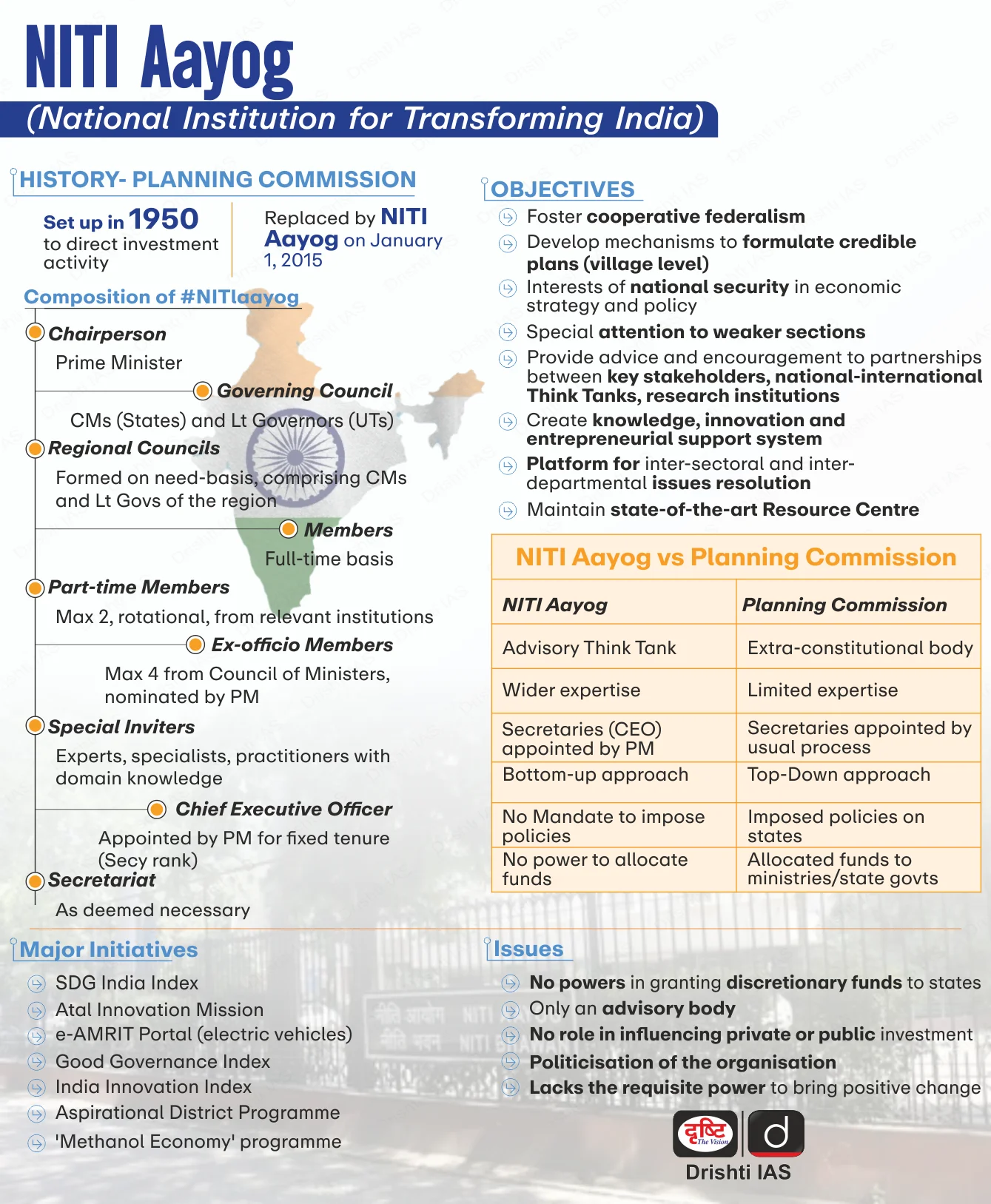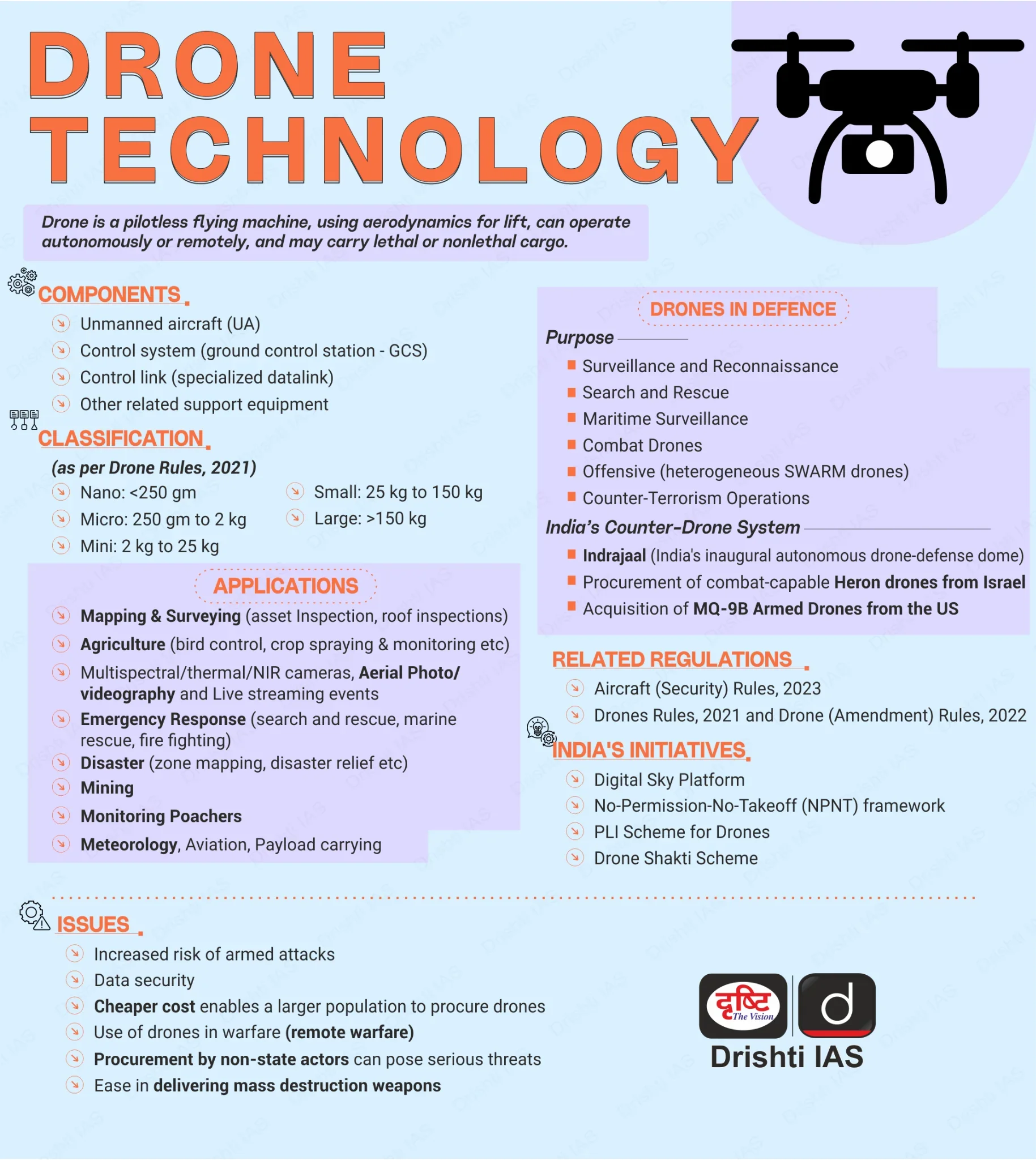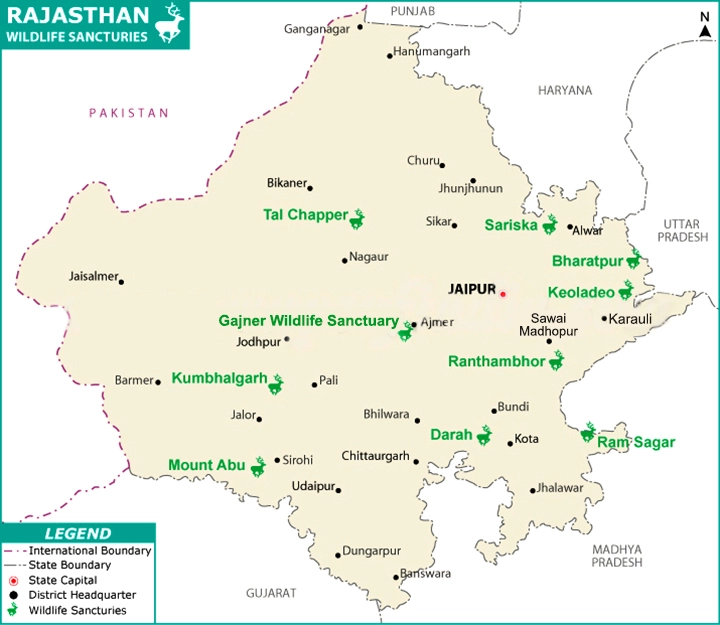Governance
Special Intensive Revision of Electoral Rolls
For Prelims: Supreme Court, Election Commission of India, Aadhaar, Electoral Roll, Representation of the People Act, 1950, Article 324.
For Mains: Need of revision of electoral rolls and associated concerns, Steps needed to ensure integrity and accuracy of electoral rolls revision.
Why in News?
The Supreme Court (SC) is reviewing the Election Commission of India’s Special Intensive Revision (SIR) of electoral rolls in Bihar and suggested accepting Aadhaar, voter ID, and ration cards as valid documents for voter enumeration.
- However, the SC rejected the argument made by petitioners that the ECI lacked the authority to carry out the revision.
What are Key Facts Regarding the Special Intensive Revision of Electoral Rolls?
- About Electoral Rolls: An Electoral Roll (also known as a Voter List or Electoral Register) is the official list of all eligible and registered voters within a specific constituency.
- It is used to verify voter identities and ensure a fair and transparent electoral process during elections.
- The Electoral Rolls are prepared by the ECI under the Representation of the People Act (RP Act), 1950.
- It excludes non-citizens (Section 16) and includes citizens aged 18 or above who are ordinarily resident in the constituency (Section 19).
- About Special Intensive Revision: SIR is a focused, time-bound house-to-house voters’ verification process conducted by Booth Level Officers (BLOs) to update and correct the electoral rolls before major elections.
- It ensures that the voter list is accurate, inclusive, and free from discrepancies by allowing new registrations, deletions, and modifications.
- Section 21 of the RP Act, 1950 empowers the ECI to prepare and revise electoral rolls, including conducting a special revision at any time with recorded reasons.
- Constitutional Basis of SIR: Article 324 vests the ECI with the power to supervise and control the preparation of electoral rolls and conduct of elections.
- Article 326 guarantees universal adult suffrage, allowing citizens aged 18 and above to vote, unless disqualified by law due to criminal conviction, unsound mind, or corruption.
- Judicial Stand: The Supreme Court in the Mohinder Singh Gill v. The Chief Election Commissioner Case, 1977 upheld the ECI’s broad powers under Article 324 to ensure free and fair elections, including ordering re-polls if needed, and emphasized that judicial review is restricted during elections as per Article 329(b).
- It clarified that ECI can act independently if laws under Articles 327 and 328 are silent on any aspect.
- It also noted that while natural justice is important, the ECI can take swift and practical decisions in exceptional situations.
- Previous Electoral Roll Revision: SIRs were conducted in 1952–56, 1957, 1961, 1965, 1966, 1983–84, 1987–89, 1992, 1993, 1995, 2002, 2003, and 2004 in various parts of the country. In Bihar, the last SIR was held in 2003.
Note: Article 327 deals with the power of Parliament to make provision with respect to elections to Legislatures.
- Article 328 deals with power of the Legislature of a State to make provision with respect to elections to such Legislature.
What is the Need for Special Intensive Revision of Electoral Rolls?
- Error-Free and Updated Voter List: SIR helps remove ineligible voters, add newly eligible or previously missed voters, and correct errors in the electoral roll to ensure accuracy and prevent fraud.
- SIR facilitates re-registration of migrants and shifting populations and ensures voter lists align with updated constituency boundaries.
- Safeguarding Democratic Legitimacy: SIR supports the idea of "one person, one vote" by removing ghost voters and duplicates, helping maintain public trust in the democratic system through careful checks.
- Boosting Voter Participation: SIR promotes civic participation through awareness drives and ensures accessible voter registration via door-to-door surveys and online options, especially benefiting marginalized groups.
- Addressing Technological & Policy Upgrades: SIR supports digital integration of electoral rolls and facilitates policy reforms like remote voting for migrants to enhance accessibility and efficiency.
- E.g., Bihar became the first Indian state to pilot mobile e-voting in municipal polls via the E-SECBHR app, using blockchain, facial recognition, biometric scanning, and voter ID verification.
What Concerns are Associated with Special Intensive Revision of Electoral Rolls?
- Risk of Mass Disenfranchisement: The exclusion of widely used IDs like Aadhaar, ration cards, or even voter IDs can disproportionately impact underprivileged voters.
- Traditionally, electoral rolls include individuals aged 18 and above based on their ordinary residence, but the current exercise also considers their place of birth.
- Impact on Migrant Workers: Frequent moves by migrant workers, students, and seasonal labourers make it hard to prove residence, risking their exclusion from voter lists due to difficulty in updating details.
- Suspicions of a Stealth National Register of Citizens: Requiring documents like birth certificates or legacy data may act as a de facto citizenship test, raising concerns of systematic exclusion of marginalized and minority groups.
- Growing concerns exist that SIR may be applied discriminatorily, thereby undermining electoral integrity and equitable representation.
- Lack of Public Consultation: Top-down implementation and excessive documentation requirements risk undermining universal suffrage, especially for illiterate and homeless populations.
How can the Integrity and Accuracy of the SIR Process be Strengthened?
- Inclusive Documentation Policies: Although Aadhaar is not proof of citizenship, it remains the most accessible ID for marginalized communities and should be permitted for residency verification, supplemented by cross-verification with legacy data.
- Robust Verification & Data Accuracy: Conduct Aadhaar-Voter ID linking with safeguards, door-to-door verification by BLOs, and regular audit by electoral authorities e.g., State Election Commission to ensure an error-free and transparent SIR of electoral rolls.
- Political & Legal Consensus: ECI should consult all stakeholders—including civil society—and run public awareness campaigns to clarify SIR rules and deadlines.
- Additionally, judicial oversight by the special tribunals and clear guidelines for Electoral Registration Officers (EROs) are essential to uphold constitutional safeguards and prevent arbitrary voter exclusions.
- Technology-Driven Safeguards: Conduct AI-powered anomaly detection to flag suspicious deletions/additions (e.g., bulk removals from one locality), implement blockchain-based voter logs, and provide a real-time tracking dashboard to prevent tampering during SIR of electoral rolls.
- Inclusivity Measures: Organize special camps for marginalized groups (e.g., disabled, and tribals), provide multilingual helplines, and conduct post-revision sample surveys to ensure accurate enrollment and minimize exclusions.
Conclusion
The Special Intensive Revision (SIR) of electoral rolls is crucial for error-free elections but must balance accuracy with inclusivity. While the Supreme Court upheld the ECI’s authority, concerns over disenfranchisement and bias persist. Tech-driven verification, political consensus, and judicial oversight can strengthen SIR’s integrity, ensuring fair and transparent voter lists for democratic legitimacy.
|
Drishti Mains Question: Q. The Special Intensive Revision (SIR) of electoral rolls is essential for electoral integrity but raises concerns of exclusion. Critically analyze. |
UPSC Civil Services Examination, Previous Year Question (PYQ)
Prelims
Q. Consider the following statements: (2021)
- In India, there is no law restricting the candidates from contesting in one Lok Sabha election from three constituencies.
- In the 1991 Lok Sabha Election, Shri Devi Lal contested from three Lok Sabha constituencies.
- As per the existing rules, if a candidate contests in one Lok Sabha election from many constituencies, his/her party should bear the cost of bye-elections to the constituencies vacated by him/her winning in all the constituencies.
Which of the statements given above is/are correct?
(a) 1 only
(b) 2 only
(c) 1 and 3
(d) 2 and 3
Ans: (b)
Mains
Q. Discuss the procedures to decide the disputes arising out of the election of a Member of the Parliament or State Legislature under The Representation of the People Act, 1951. What are the grounds on which the election of any returned candidate may be declared void? What remedy is available to the aggrieved party against the decision? Refer to the case laws. (2022)

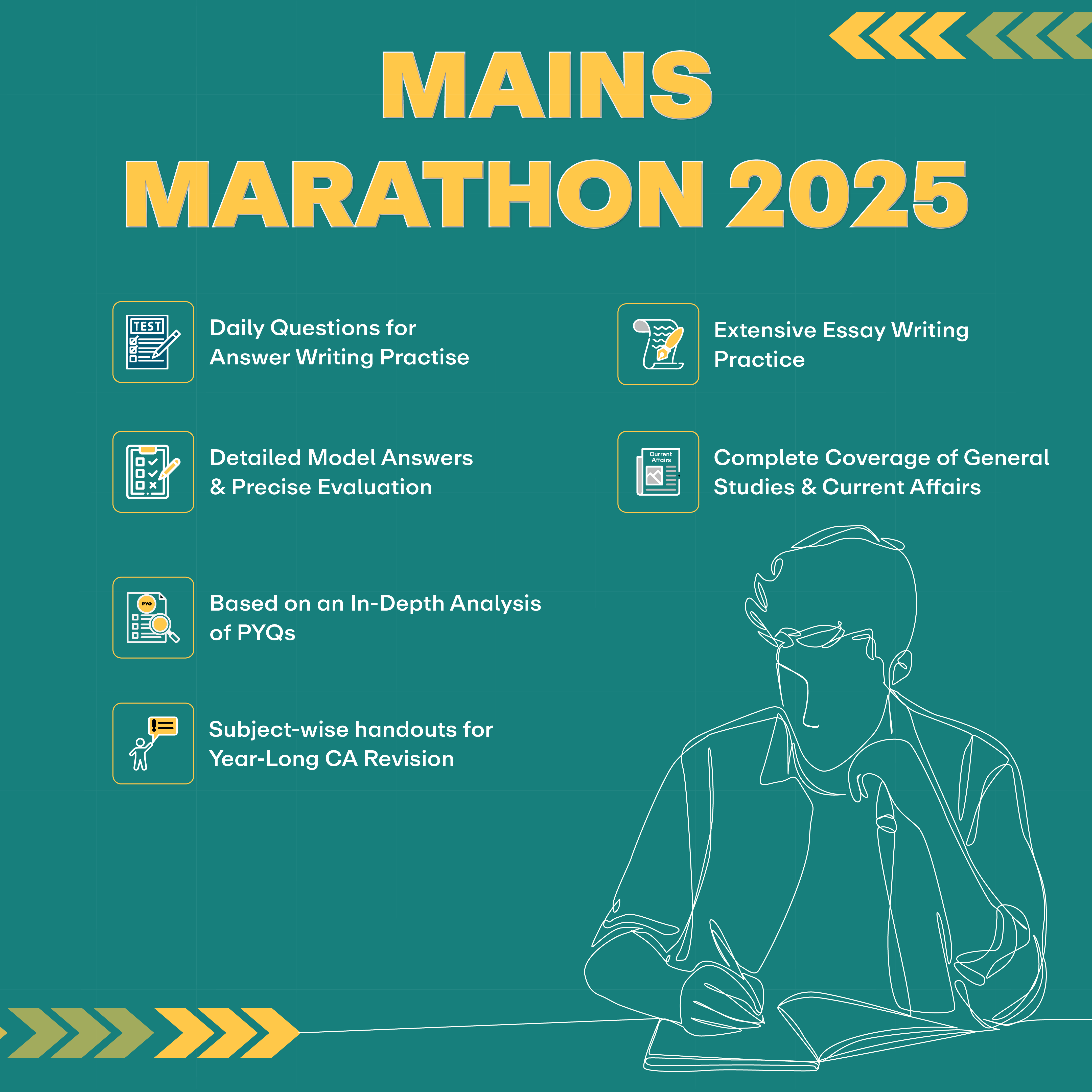
Science & Technology
Empowering States Through Science
For Prelims: National Institution for Transforming India, Department of Science and Technology, Intellectual property, National Mission on Medicinal and Aromatic Plants
For Mains: Role of State S&T Councils in India's innovation ecosystem, Importance of decentralisation in research and innovation, Challenges and reforms in India’s grassroots innovation system
Why in News?
National Institution for Transforming India (NITI Aayog), in its report “ A Roadmap for Strengthening State Science and Technology (S&T) Councils”, has called for reforms in the funding and governance of State S&T Councils.
What is the Role of State S&T Councils in India?
- About: Science, Technology, and Innovation (STI) are vital to national development, with both Central and State S&T Departments playing key roles.
- The Centre-State S&T partnership began in 1971, led by Bharat Ratna Shri C. Subramaniam, through the creation of State Science & Technology Councils (SSTCs).
- Initially set up in Karnataka, Kerala, Uttar Pradesh, and West Bengal, SSTCs now exist in almost all States and UTs across India.
- Support: SSTCs are supported by the Department of Science and Technology (DST), Ministry of Science and Technology under the State Science and Technology Programme (SSTP).
- DST provides budgetary assistance to S&T Secretariats of States and UTs. S&T Councils also receive state government funding, though the levels vary significantly.
- Key Roles: Councils act as enablers of grassroots innovations, often in fields such as agriculture, renewable energy, disaster management, and biotechnology.
- Promote science-based solutions for resource management, environmental improvement, and better quality of life.
- S&T Councils develop scientific attitude and awareness among all sections of society.
What are the Key Challenges Faced by State S&T Councils?
- Overdependence on Core Grants: Many councils rely heavily on core grants from the DST, with minimal effort to secure project-based grants from other ministries or agencies.
- Low Central Financial Support: Despite being intended as key players in decentralised science governance, most councils receive very little funding from the Centre.
- For instance, of the Rs 300 crore annual budget in Gujarat’s State Science and Technology Council, only Rs 1.07 crore came from the Centre. In the case of Kerala’s Rs 150 crore, the Centre’s (DST) contribution was zero.
- State contributions to national R&D are minimal at just 6.7%, compared to the Centre's 44%. Smaller states like Sikkim and Mizoram are especially impacted by limited budgets, hindering their scientific progress.
- Lack of Industry and Institutional Linkages: Minimal collaboration with state industries, Public Sector Enterprises (PSEs), and academic institutions (IITs, IIMs) limits the councils' impact on applied research and innovation.
- Inefficient Use of Resources: Disparities in fund utilisation across states point to regional imbalances and inefficiencies in execution.
- Lagging Research Output: The bulk of India’s S&T output comes from Centrally funded institutions, with State Councils failing to match productivity or impact.
- Budget Cuts in Some States: A comparative analysis of State S&T Council budgets from 2023–24 to 2024–25 shows a 17.65% overall funding increase, indicating growing state-level investment.
- However, states like Sikkim (-16.16%), Tamil Nadu (-4%), and Uttarakhand (-5%) have seen reductions in their S&T budgets, affecting ongoing and future projects.
- Lack of Adaptability: Councils are struggling to keep pace with the rapidly evolving R&D landscape, making their programs and models outdated.
- Weak Leadership: Many councils are led by bureaucrats rather than experts in science and technology. This lack of scientific leadership has significantly undermined the councils' ability to drive innovation and research.
- Staffing Issues: The councils suffer from a shortage of skilled personnel, and many positions remain vacant due to budgetary constraints. Additionally, many councils lack full-time scientific leaders, leading to inefficiency and poor staff morale.
Success Stories of State S&T Councils
- Kerala: Kerala's State Science & Technology Council has successfully implemented fellowship programs that helped women scientists return to research after career breaks.
- The state also allocates over Rs 170 crore annually for science and technology initiatives, showcasing a robust commitment to R&D.
- Tamil Nadu: It has emerged as a national leader in intellectual property filings, driven by the efforts of its Patent Information Centre (PIC).
- The state ranked 1st in patent filings and GI registrations and 3rd in industrial design filings (as per the Indian Patent Office Annual Report 2022–23).
- For its significant contribution to IP awareness and technology commercialization, Tamil Nadu’s PIC received the National Intellectual Property Award 2023 (Special Citation) from the Ministry of Commerce and Industry.
- Punjab: Punjab's innovative approach to paddy straw management has reduced pollution and boosted the local economy by promoting sustainable agricultural practices.
- This initiative has also created employment opportunities and contributed to environmental conservation.
- Mizoram: The Innovation Facility Centre (IFC) in Mizoram supports grassroots innovation through technical aid, institutional support, and IP filing.
- It has developed 82 innovation-related and 93 non-innovative products. The IFC collaborates with institutions like National Innovation Foundation (NIF), NIT Mizoram to promote inclusive growth.
- Manipur: Manipur’s aromatic plant cultivation project, aligned with the National Mission on Medicinal and Aromatic Plants, is positioning the state as a potential hub for natural aroma-based products.
- The initiative has created jobs for local farmers, boosted rural entrepreneurship, and contributed to regional economic growth, showcasing how localized scientific efforts can drive socio-economic development.
What are the Key Reforms Suggested by NITI Aayog to Strengthen SSTCs?
- Scientific Leadership: NITI Aayog recommends appointing full-time scientists, rather than bureaucrats, to head the councils. This will ensure that councils are driven by experts who can push for scientific excellence and innovation.
- Performance-Based Funding: Instead of flat, non-performance-based grants, NITI Aayog advocates for funding that is linked to the performance of councils. This would incentivize states to improve their R&D outcomes and maximize the impact of every rupee spent.
- States should allocate at least 0.5% of Gross State Domestic Product (GSDP) to S&T for regular and advanced activities.
- DST should replace core grants with performance-based project funding, except for small NE and UT councils. Councils should explore central ministry schemes beyond DST for additional funding.
- Secure Jobs and Career Growth: To improve the morale of scientific staff and retain talent, the roadmap suggests offering secure, long-term jobs with clear career progression for researchers working with SSTCs.
- Strengthening Industry and Academic Linkages: Building stronger connections between councils, industries, and academic institutions is critical.
- This would help bridge the gap between research and commercialization, leading to innovations that benefit both society and the economy.
- Science Cities and Innovation Hubs: The roadmap calls for the establishment of Science Cities planetariums, and innovation hubs in every state.
- Example: Gujarat Science City in Ahmedabad is a leading hub for scientific learning with state-of-the-art facilities like the Robotics Gallery, showcasing real-world applications in healthcare, industry, and daily life.
- These would serve as centers of excellence, bringing together research, education, and industry to foster local scientific and technological advancements.
- STI Information Cell: Councils should establish Science, Technology & Innovation (STI) Cells to manage state-level STI data and act as nodal points for sharing indicators with government agencies. These cells will support evidence-based policymaking.
- SSR and CSR Cells: Councils should lead Scientific Social Responsibility (SSR) and Corporate Social Responsibility (CSR) efforts by coordinating resources from institutions and stakeholders to address local challenges and promote scientific awareness.
- National Monitoring System: To ensure the effectiveness of these reforms, NITI Aayog proposes the creation of a national monitoring system that tracks the progress of State S&T Councils and holds them accountable for their performance.
|
Drishti Mains Question: Discuss the role of State Science and Technology Councils in promoting decentralised scientific governance in India. Highlight the key challenges they face in fulfilling this mandate. |
UPSC Civil Services Examination, Previous Year Question (PYQ)
Prelims:
Q.1 Which of the following statements is/are correct regarding National Innovation Foundation-India (NIF)? (2015)
- NIF is an autonomous body of the Department of Science and Technology under the Central Government.
- NIF is an initiative to strengthen the highly advanced scientific research in India’s premier scientific institutions in collaboration with highly advanced foreign scientific institutions.
Select the correct answer using the code given below:
(a) 1 only
(b) 2 only
(c) Both 1 and 2
(d) Neither 1 nor 2
Ans: (a)
Q2. For outstanding contribution to which one of the following fields is Shanti Swarup Bhatnagar Prize given? (2009)
(a) Literature
(b) Performing Arts
(c) Science
(d) Social Service
Ans: (c)
Q3. Atal Innovation Mission is set up under the (2019)
(a) Department of Science and Technology
(b) Ministry of Labour and Employment
(c) NITI Aayog
(d) Ministry of Skill Development and Entrepreneurship
Ans: (c)
Mains
Q. Discuss India’s achievements in the field of Space Science and Technology. How the application of this technology helped India in its socio-economic development? (2016)

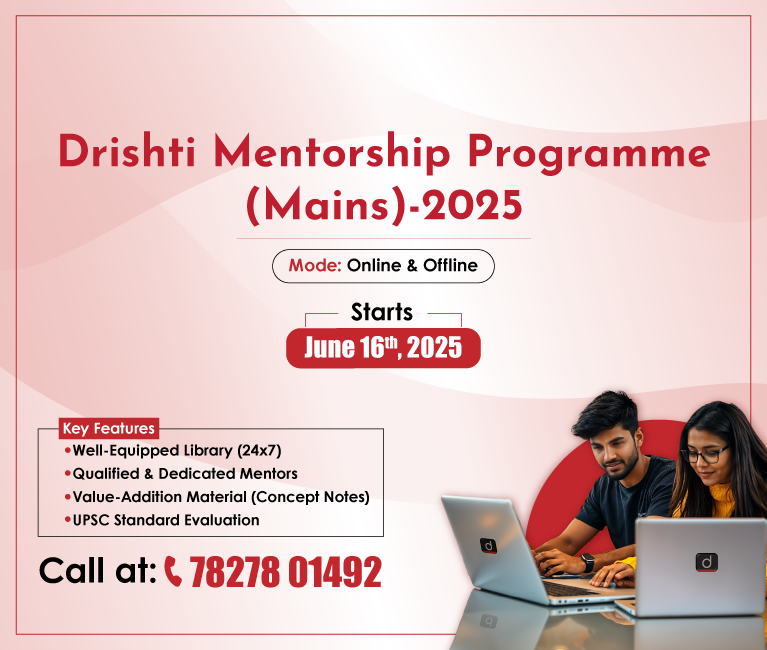
Important Facts For Prelims
Aadi KARMAYOGI and TALASH
Why in News?
The Ministry of Tribal Affairs has launched the first Regional Process Lab (RPL) under the Aadi KARMAYOGI, which focuses on strengthening local governance.
- Simultaneously, the National Education Society for Tribal Students (NESTS), an autonomous organization under the Ministry of Tribal Affairs, launched the TALASH (Tribal Aptitude, Life Skills and Self-Esteem Hub) programme to support the growth of tribal students.
What is Aadi KARMAYOGI?
- About: Aadi KARMAYOGI is a National Mission for Responsive Governance, designed to build a cadre of 20 lakh tribal grassroots functionaries and village-level change leaders, who will drive inclusive development and strengthen last-mile service delivery in tribal areas.
- The mission aligns with Pradhan Mantri Janjati Adivasi Nyaya Maha Abhiyaan (PM JANMAN) and Dharti Aaba Janjatiya Gram Utkarsh Abhiyan (DAJGUA), emphasizing convergence, community involvement, and capability enhancement.
- Objectives:
- Build Local Leadership: Develop State Master Trainers (SMTs), District Master Trainers (DMTs), and Block-level trainers.
- Strengthen Last-Mile Delivery: Enhance service delivery and implementation of tribal welfare schemes in remote areas.
- Promote Community-Centric Governance: Empower tribal communities with dignity, empathy, and purpose.
- Implementation: SMTs from five southern states Karnataka, Kerala, Tamil Nadu, Andhra Pradesh, and Telangana are being trained at the RPL in Bengaluru.
- These trainers will go on to lead State Process Labs (SPLs), which will then train DMTs. The programme also involves civil society organisations to encourage participatory learning and ensure the training fits local contexts, supporting ongoing learning and leadership.
- The Aadi Karmayogi Mission supports responsive governance through local-level planning, quick grievance redressal, and joint implementation. It brings together departments like Tribal Affairs, Rural Development, Women and Child Development, Jal Shakti, Education, and Forests.
What is TALASH?
- About: Launched by the NESTS in collaboration with United Nations Children’s Fund (UNICEF) India, TALASH is an innovative platform designed to support the holistic development of over 1.38 lakh students across Eklavya Model Residential Schools (EMRSs) in India.
- The TALASH platform prepares tribal students to navigate the challenges of a competitive world by equipping them with essential life skills and career clarity. It also aligns with the National Education Policy (NEP) 2020, emphasizing inclusive, equitable education for all.
- TALASH is rolling out in phases. So far, 189 teachers from 75 EMRSs are trained. By the end of 2025, it will cover all EMRSs.
- Key Features of TALASH:
- Psychometric Assessments: Based on the National Council of Educational Research and Training (NCERT) ‘Tamanna’ framework, students take an aptitude test and receive a personalized career card.
- Career Counselling: Helps students align their aspirations with their strengths and interests.
- Life Skills and Self-Esteem Modules: Offers interactive lessons to build confidence and emotional intelligence.
- E-Learning for Teachers: Empowers teachers with digital tools and training to guide and mentor students effectively.
Note: Tamanna (Try And Measure Aptitude And Natural Abilities) is an aptitude test developed by NCERT and Central Board of Secondary Education under the Ministry of Education. It helps students of Classes IX and X understand their strengths across various dimensions.
- The test is voluntary, has no pass or fail, and is meant to guide rather than impose subject choices.
UPSC Civil Services Examination, Previous Year Question (PYQ)
Prelims
Q. Consider the following statements about Particularly Vulnerable Tribal Groups (PVTGs) in India: (2019)
- PVTGs reside in 18 States and one Union Territory.
- A stagnant or declining population is one of the criteria for determining PVTG status.
- There are 95 PVTGs officially notified in the country so far.
- Irular and Konda Reddi tribes are included in the list of PVTGs.
Which of the statements given above are correct?
(a) 1, 2 and 3
(b) 2, 3 and 4
(c) 1, 2 and 4
(d) 1, 3 and 4
Ans: C


Rapid Fire
Eklavya Model Residential Schools
Several students from Eklavya Model Residential Schools (EMRS) have cracked medical & engineering entrance exams.
Eklavya Model Residential Schools (EMRS)
- About: EMRS is a flagship initiative launched by the Ministry of Tribal Affairs (MoTA) in 1998 to provide free, quality residential education to Scheduled Tribe (ST) students from Class VI to XII in remote and tribal-dominated areas.
- Objective: To bridge the educational gap between tribal and non-tribal populations by offering CBSE-based instruction integrated with holistic development, including sports, culture, and skill training.
- Revamp & Expansion: The scheme was revamped in 2018–19 to expand coverage. EMRSs are now to be established in blocks with more that 50% ST population and with at least 20,000 tribal persons with a target of 728 schools by 2026.
- Governance: EMRSs are implemented and managed by the National Education Society for Tribal Students (NESTS), an autonomous body under MoTA.
- Key Features:
- Co-educational, fully residential schools modeled on Navodaya Vidyalayas with a tribal focus.
- Follow the CBSE curriculum and provide free education along with all basic amenities.
- Infrastructure includes classrooms, labs, hostels, staff quarters, playgrounds, and cultural activity spaces.
- Each school has a capacity of 480 students with gender parity.
- Up to 10% seats may be allotted to non-ST students.
- 20% reservation under sports quota for meritorious ST students in athletics and games.
Other Initiatives for Tribal Education
- Rajiv Gandhi National Fellowship (RGNF)
- Vocational Training Centres
- National Overseas Scholarship Scheme
- Post-Matric Scholarships
| Read More: Recruitment Concerns in Eklavya Model |


Rapid Fire
Indigenous MALE Drones
India is accelerating the procurement of 87 indigenously developed Medium Altitude Long Endurance (MALE) drones, featuring at least 60% indigenous content, to reduce dependence on foreign suppliers and strengthen surveillance along its sea and land borders.
- This is the first instance of Indian private manufacturers being tasked to supply MALE drones under the Make in India initiative replacing earlier imports from Israel.
- These drones will offer over 30 hours of flight endurance at altitudes of up to 35,000 feet, providing ISR (Intelligence, Surveillance & Reconnaissance) support in varied terrains.
India’s Indigenous Drones
|
Drone Name |
Key Features |
|
Lakshya |
Target drone for reconnaissance and target acquisition; rocket-launched, turbojet-powered. |
|
Nishant |
Multi-mission UAV; day/night capable; used for surveillance, target tracking, and artillery fire correction. |
|
RUSTOM-1 |
Short Range Remotely Piloted Aircraft System (SR-RPAS, 800 kg class); performs ISR, target acquisition, and image exploitation. |
|
TAPAS/Rustom-2 |
MALE UAV developed for Intelligence, Surveillance, Target Acquisition and Reconnaissance (ISTAR) roles. |
|
Archer |
Weaponized short-range UAV; for reconnaissance, surveillance, and low-intensity conflict. |
Note: All the above mentioned drones have been developed by Defence Research and Development Organisation (DRDO).
| Read More: UAVs in Modern Warfare |


Rapid Fire
Sariska Tiger Reserve
The Standing Committee of the National Board for Wildlife (SC-NBWL), chaired by the Union Environment Minister, has approved the proposal to redraw the boundaries of the Sariska Tiger Reserve’s (STR) Critical Tiger Habitat (CTH), with the Supreme Court's final nod awaited.
- The Supreme Court is suo motu examining several issues related to the STR, including the rationalisation of its boundaries. Its Central Empowered Committee (CEC) has recommended changes to address human disturbances such as village relocations and cattle grazing.
- Proposed Changes: The rationalisation will result in the CTH expanding from 881.11 sq km to 924.49 sq km, while the buffer zone will reduce from 245.72 sq km to 203.2 sq km, balancing conservation needs with developmental pressures.
- Ecological and Legal Context: CTH is protected under the Wildlife Protection Act, 1972 and must be kept free of human interference.
- The re-demarcation may benefit over 50 mining operations shut down due to proximity to tiger habitat.
- Sariska Tiger Reserve: The Sariska Tiger Reserve, located in Rajasthan’s Alwar district within the Aravalli hills, was declared a wildlife sanctuary in 1955 and became a tiger reserve in 1978 under Project Tiger.
- Known for its rich history, it houses the Kankarwadi Fort, where Aurangzeb imprisoned Dara Shikoh, and the Pandupole Hanuman temple linked to the Pandavas.
- The landscape is marked by rocky terrain, grasslands, scrub-thorn forests, and semi-deciduous woodlands. Vegetation includes dhok, salar, kadaya, ber, gugal, and bamboo.
- The reserve supports diverse fauna including Royal Bengal tigers, leopards, sambhar, nilgai, wild boars, and hyenas.
- Sariska Tiger Reserve also surrounds the sites like Jai Samand Lake and the Siliserh Lake.
| Read more: Sariska Tiger Reserve |


Rapid Fire
Advancements in Magnetic Field Measurements
Scientists at the Raman Research Institute (RRI) have developed a technique called Raman-Driven Spin Noise Spectroscopy (RDSNS) which can be incorporated into an all-optical quantum magnetometer to improve magnetic field measurements.
RDSNS (Raman-Driven Spin Noise Spectroscopy):
- About: RDSNS is an advanced all-optical technique for measuring magnetic fields using laser light and Rubidium atoms.
- Atoms naturally exhibit tiny, random spin movements, known as spin noise.
- When exposed to a magnetic field, the pattern of this noise changes.
- By detecting these changes with laser light, researchers can measure the magnetic field without disturbing the atoms.
- Key Advantages:
- It enables shield-free, compact/portable, and field-deployable magnetic sensing with a wide dynamic range and high sensitivity.
- It remains effective even in outdoor or noisy environments and is resistant to electrical and mechanical interference.
- Applications: RDSNS is useful in medical imaging (MRI alternative), geological surveys (mineral detection), space exploration (planetary magnetic fields), and quantum research (atomic and spin studies).
Magnetometer:
- About: A magnetometer is a device used to measure the strength and direction of magnetic fields, commonly applied in medical imaging, navigation, and earth/space studies.
- In ocean exploration, it helps detect shipwrecks, aircraft debris, and geological features on the seafloor.
- Working: The Earth’s magnetic field is generated by molten iron and nickel in its outer core and varies by location.
- Magnetometers detect this variation by recording magnetic readings (typically at 1 Hz). When encountering ferrous objects (like anchors, wreckage, or basalt), the device senses magnetic anomalies, sudden, unexpected changes in the field.
- Modern Magnetometers: Modern magnetometers such as Optically Pumped Atomic Magnetometers (OPAMs) and Spin-Exchange Relaxation-Free (SERF) use laser light and alkali atoms (e.g., Rubidium) to detect magnetic fields with high sensitivity.
- However, they require costly magnetic shielding, function only in noise-free lab settings, and have a limited detection range.
| Read More: Aditya-L1: Deployment of Magnetometer Boom in Sun's Orbit |



